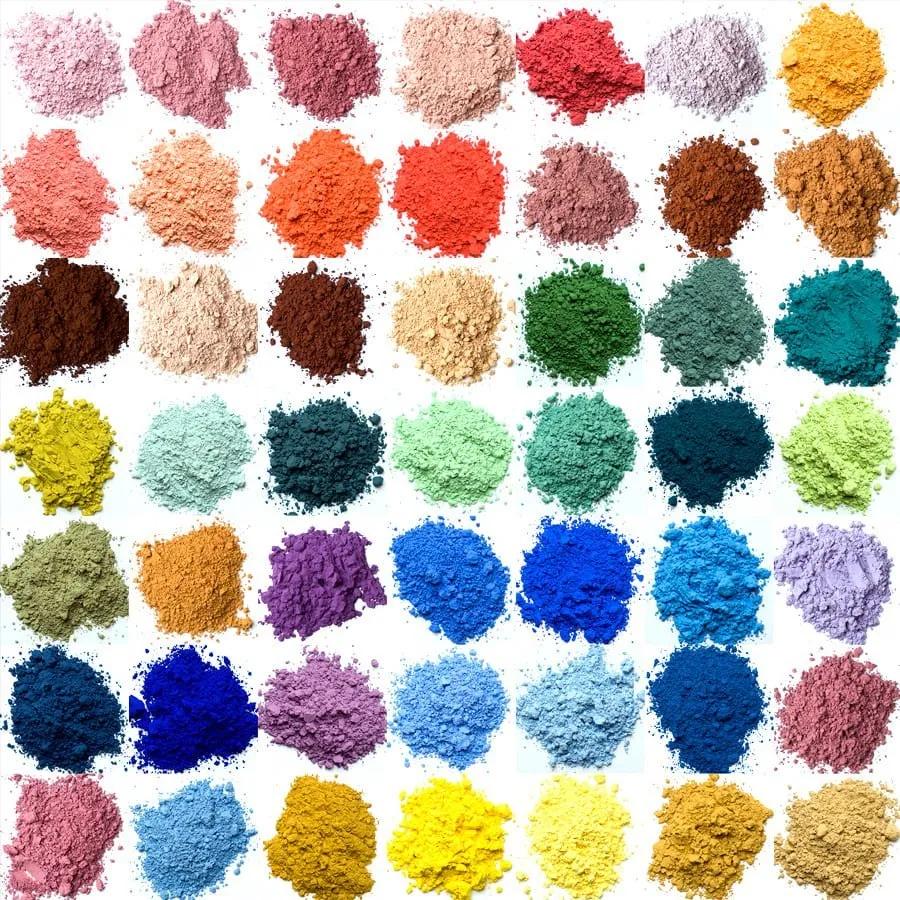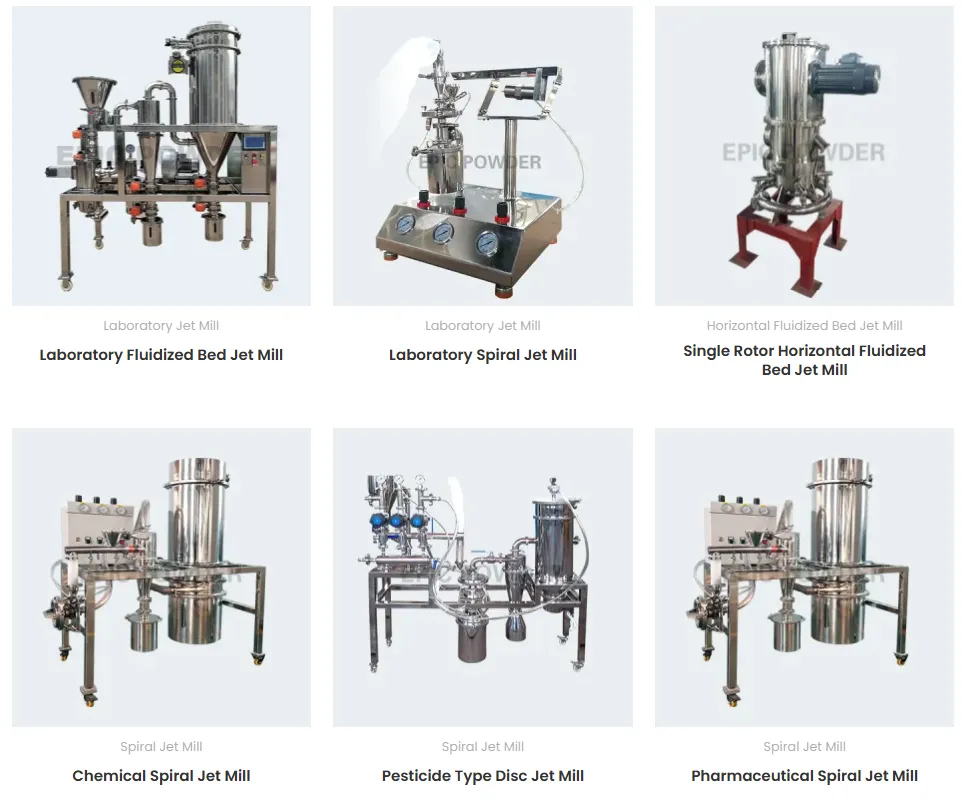Cos'è la smaltatura ceramica?
Lo smalto ceramico è un componente fondamentale nella produzione di piastrelle e oggetti in ceramica. Funge da rivestimento vetroso che ne migliora l'aspetto estetico, la resistenza superficiale e la funzionalità. Lo smalto ceramico è composto principalmente da materie prime come quarzo, fritte, fondenti, caolino e altri additivi inorganici. Richiede un controllo preciso delle dimensioni delle particelle e un'uniformità tale da garantire prestazioni costanti dopo la cottura. Per raggiungere questo obiettivo, i processi di macinazione superfine, in particolare quelli con polverizzatori ad aria, sono diventati essenziali nella moderna lavorazione dello smalto ceramico.

Perché è essenziale la macinazione superfine della smaltatura ceramica?
La macinazione superfine è necessaria per ottenere una distribuzione granulometrica ristretta, con particelle fini tipicamente inferiori a 1 µm - 10 µm, fondamentale per mantenere l'omogeneità dello smalto e ottimizzare il comportamento di fusione durante la cottura. Più fine è la granulometria, maggiore è l'area superficiale, il che migliora la reattività dello smalto e l'efficienza di sinterizzazione. Ciò si traduce in tempi di cottura più brevi, minore utilizzo di smalto, migliore lucentezza superficiale e migliore resistenza all'acqua nel prodotto ceramico finale cotto. Ad esempio, la ricerca dimostra che con granulometrie medie ridotte a meno di 0,3 µm, la quantità di smalto utilizzata può essere ridotta a un terzo rispetto ai livelli convenzionali, migliorando al contempo la brillantezza e il colore dopo la cottura.
Perché utilizzare un polverizzatore ad aria per la lavorazione della smaltatura ceramica?
Il polverizzatore ad aria è ampiamente preferito per la polverizzazione superfine dello smalto ceramico grazie alla sua capacità di produrre un'elevata finezza in un intervallo ristretto di dimensioni delle particelle, senza degradazione termica o contaminazione. Il processo utilizza aria compressa ad alta velocità per indurre collisioni tra particelle e macinazione senza contatto meccanico. Elimina i rischi di contaminazione derivanti dai mezzi di macinazione. Inoltre, il polverizzatore ad aria consente una classificazione precisa delle particelle per mantenerne l'uniformità. È essenziale per la qualità dello smalto e supporta la macinazione a secco, riducendo la necessità di fasi di essiccazione comuni nei processi di macinazione a umido.
Considerazioni chiave nel polverizzatore ad aria per smalto ceramico
Per ottenere risultati ottimali, la polverizzazione ad aria dello smalto ceramico richiede l'attenzione a diversi parametri. Tra questi:
Caratteristiche del materiale di alimentazione quali contenuto di umidità, durezza e dimensione iniziale delle particelle.
Pressione di macinazione e velocità del flusso d'aria, che influiscono sull'efficienza della macinazione e sulla rottura delle particelle.
Impostazioni della velocità del classificatore per controllare la dimensione di taglio per la finezza del prodotto e garantire una distribuzione granulometrica precisa.
Prevenzione del surriscaldamento per mantenere la stabilità chimica e fisica della smaltatura.
Resistenza all'usura delle attrezzature data la natura abrasiva dei materiali ceramici.
Ottimizzando questi parametri, il polverizzatore ad aria può produrre polveri superfini uniformi con una dimensione delle particelle desiderata, in genere compresa tra 0,1 µm e 10 µm, fondamentale per una smaltatura di alta qualità. brevetti.
Vantaggi del polverizzatore d'aria per smalto ceramico

La macinazione senza supporti elimina la contaminazione e semplifica la pulizia.
Elevata efficienza di macinazione con un consumo energetico relativamente basso rispetto alla tradizionale macinazione a sfere.
Eccellente controllo sulla distribuzione granulometrica per proprietà uniformi della smaltatura.
La macinazione a secco evita i costi di essiccazione e i problemi legati all'umidità.
Produce polveri con una maggiore superficie che favorisce migliori caratteristiche di cottura.
Conclusione
La macinazione superfine dello smalto ceramico tramite polverizzatore ad aria è un processo all'avanguardia, fondamentale per la produzione di rivestimenti ceramici di alta qualità ed economici. La conoscenza dei requisiti dei materiali, del funzionamento delle apparecchiature e delle variabili di processo consente ai produttori di ottimizzare le prestazioni dello smalto e l'efficienza produttiva. Polvere EPICA Grazie alla sua avanzata tecnologia di polverizzazione dell'aria, Machinery si distingue come fornitore preferito dai produttori di ceramica che mirano a ottenere una qualità superiore della polvere di smalto con attrezzature affidabili ed efficienti dal punto di vista energetico.
Concentrandosi su queste considerazioni chiave e utilizzando apparecchiature di polverizzazione ad aria robuste, i produttori di ceramica possono realizzare significativi miglioramenti di prodotto e di processo che stimolano la competitività in un mercato globale esigente.
Macchinari per polveri EPIC
Macchinari per polveri EPICI polverizzatori ad aria di EPIC sono progettati per offrire prestazioni di macinazione superiori, ideali per la lavorazione dello smalto ceramico. Integrando una tecnologia di classificazione avanzata e un design dell'aria ottimizzato, i polverizzatori ad aria di EPIC raggiungono granulometrie ultrafini con distribuzioni strette, raggiungendo tipicamente un D90 inferiore a 10 micron. Queste prestazioni si traducono in un migliore comportamento di fusione dello smalto, tempi di cottura ridotti e una maggiore lucentezza superficiale e durata dei prodotti ceramici.
Inoltre, i polverizzatori ad aria EPIC incorporano materiali resistenti all'usura e sistemi di controllo intelligenti per mantenere una qualità del prodotto costante, riducendo al minimo i tempi di fermo e i costi di manutenzione. Il processo di macinazione a secco è in linea con gli obiettivi di produzione sostenibile, riducendo il consumo di acqua e i requisiti di trattamento delle acque reflue comuni nei processi di macinazione a umido.